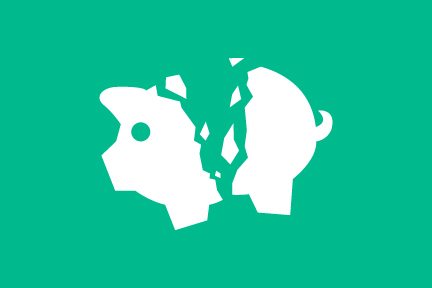Is Bankruptcy the Right Option For Your Debt Management?

Chapter 7—“Straight Bankruptcy”
An individual, partnership, corporation, or other business entity is eligible for Chapter 7 bankruptcy relief. See 11 U.S.C. §§ 101(41), 109(b). Chapter 7 bankruptcy is also called a “straight bankruptcy.” With Chapter 7 bankruptcy, a trustee gathers and sells the debtor's nonexempt assets and uses the proceeds to satisfy the debtor’s creditors to the extent possible. One of the primary purposes of an individual person’s Chapter 7 bankruptcy is to discharge certain debts in order to give the individual debtor a "fresh start"—i.e. the debtor has no liability for discharged debts. Generally, an individual’s personal Chapter 7 case results in a discharge of debts; however, the right to a discharge is not absolute. Individuals should also be aware that while a debtor may, in some cases, keep certain "exempt" property, individuals pursing Chapter 7 bankruptcy often lose any real estate they own, including their home. Discharge of debt is only available for individuals that file for Chapter 7 bankruptcy. For a business or corporation, Chapter 7 bankruptcy results in a dissolution of the entity, after which, the business will owe no remaining debts.
Chapter 13—”Wage Earner’s Plan”
Chapter 13 bankruptcy, which is only available to individuals and not business entities, is often called a “wage earner's plan.” It enables individuals to develop a plan to repay all or part of their debts. Homeowners commonly utilize this type of bankruptcy, as it allows for the individual to propose a repayment plan to make installments to creditors over a span of three to five years. By filing under Chapter 13, individuals can stop foreclosure proceedings and may cure delinquent mortgage payments over time. However, the homeowner must still make all mortgage payments that come due during the Chapter 13 repayment plan on time.
Filing under Chapter 13 also allows individuals to reschedule secured debts (other than a mortgage for their primary residence) and extend them over the life of the Chapter 13 repayment plan. Doing this may lower the payments. Chapter 13 also has a special provision that protects third parties who are liable with the debtor on "consumer debts." This provision may protect co-signers. Finally, Chapter 13 acts like a consolidation loan under which the individual makes the planned payments to a Chapter 13 trustee who then distributes payments to creditors. Individuals have no direct contact with creditors while undergoing a Chapter 13 bankruptcy.
An individual is eligible for Chapter 13 bankruptcy relief if the individual’s unsecured debts are less than $383,175 and secured debts are less than $1,149,525. See 11 U.S.C. § 109(e). These amounts are adjusted periodically to reflect changes in the consumer price index. Chapter 13 bankruptcy is only available to individuals, and not to corporations or partnerships.
Bankruptcy Considerations for Individuals
An individual cannot file under Chapter 7 or Chapter 13 if:
1. A prior bankruptcy petition was dismissed during the previous 180 days due to the debtor’s willful failure to appear before the court or comply with orders of the court; or
2. A prior bankruptcy petition was voluntarily dismissed after creditors sought relief from the bankruptcy court to recover property upon which they hold liens. See 11 U.S.C. §§ 109(g), 362(d) and (e).
Additionally, an individual cannot file under Chapter 7 or Chapter 13 (or any chapter of the Bankruptcy Code) unless he or she has, within 180 days before filing, received credit counseling from an approved credit-counseling agency either in an individual or group briefing. See 11 U.S.C. §§ 109, 111.
Lastly, individuals should be aware that there are many types of debts that cannot be eliminated in bankruptcy, which generally include:
1. Student loans. Student loans can only be discharged in bankruptcy if the individual can show that repaying the loan would cause "undue hardship." However, undue hardship is high standard to meet. You must be able to show not only that you cannot afford to pay your loans now, but also that you have very little likelihood of being able to pay your loans in the future.
2. Secured Debts: If an individual has a secured debt (such as a lien on property) bankruptcy may eliminate the debt, but it does not prevent the creditor from repossessing the property that is the subject of the debt.
3. Child support and alimony obligations. Bankruptcy cannot discharge child support or alimony obligations. They remain the same, as if the individual never filed. Additionally, if the individual files for Chapter 13, the repayment plan has to provide for these debts to be repaid in full.
If you are considering bankruptcy, find an experienced attorney by quickly posting a short summary of your legal needs on www.legalserviceslink.com, and let the perfect attorney come to you!
Do You Need An Attorney?
If so, post a short summary of your legal needs to our site and let attorneys submit applications to fulfill those needs. No time wasted, no hassle, no confusion, no cost.

